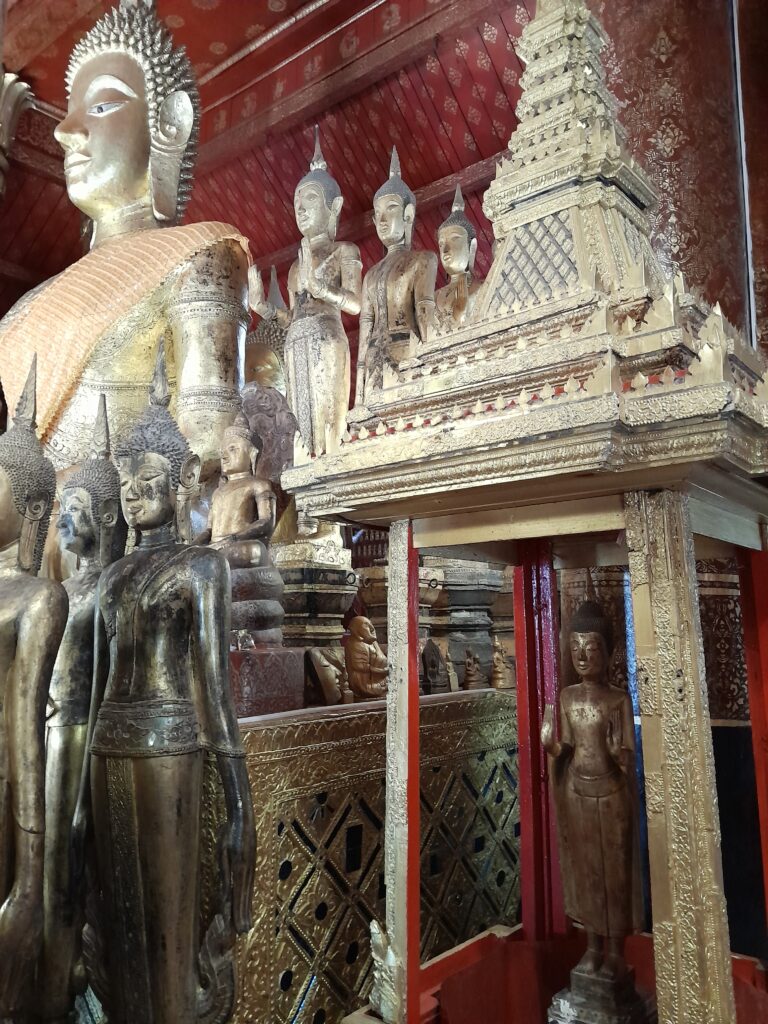On Market Street in Luang Prabang, next to the Palace Grounds that house the National Museum, stands Wat May Souvannapoumaram, also known as Wat May. Built in the 18th century, this is the largest temple in Luang Prabang.
After leaving the National Museum, visiting the neighbouring Wat May felt like a natural next step. Outside, the striking silhouette of a stupa greeted us, a familiar sight at temples across Laos. Before entering the temple, we purchased a ticket from a vendor stationed at the gate.


As we entered the temple, the sounds of the street disappeared, giving a sense of stillness and calm. Inside, the air was cool and faintly scented with incense. Golden Buddha statues dominated the space, their serene expressions inviting quiet contemplation. Around them were smaller Buddhas and other intricate statues, each seemingly alive with stories of devotion and tradition.
The statues seemed to radiate an aura of tranquility, their polished surfaces catching the soft light filtering through the temple’s wooden shutters. Near many of these figures, we saw visitors leaving offerings or making small donations, gestures that keep the temple alive as a place of worship.



Beyond its serene beauty, the temple holds a rich history. Over 200 years old, Wat May served as a refuge for the royal family when Luang Prabang was sacked by Chinese forces in the 19th century. It stands not only as a place of worship but also as a symbol of resilience and cultural identity.
Toward the back of the temple we found a collection of statues great and small. Among these statues, the Emerald Buddha stood out, its deep green hue contrasting vividly with the surrounding gold and bronze figures. While the original rests in Thailand’s Grand Palace, these representations across Laos and neighboring countries reflect their shared cultural and spiritual ties.



Wat May was a serene yet powerful experience, blending the artistry of past centuries with a sense of living history. As I left its grounds and the sounds of the street returned, I couldn’t help but feel a renewed appreciation for the stories that these temples hold.




